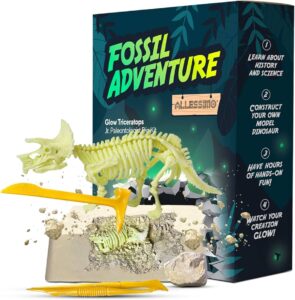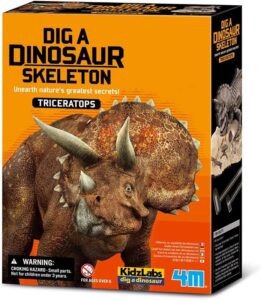Where Is Dinosaur Cove
Where does one find the remnants of a world dominated by giants if not in the secluded, windswept cliffs of Dinosaur Cove?
Nestled along the rugged coastline of Victoria, Australia, this site has garnered international attention for its rich fossil deposits that whisper tales of ancient ecosystems.
The journey to uncover Dinosaur Cove's secrets has not only challenged the mettle of paleontologists but also reshaped our understanding of prehistoric life.
As we explore the history and significant discoveries of this remote locale, one can't help but wonder what other mysteries lie buried, awaiting the light of day.
Key Takeaways
- Dinosaur Cove is located on the southeastern coast of Australia.
- It is a significant paleontological site discovered in 1980, offering insights into the Cretaceous period.
- The site is characterized by rugged cliffs, dense vegetation, and requires meticulous planning to access.
- Excavations at Dinosaur Cove have unveiled diverse dinosaur fossils, enhancing understanding of ancient ecosystems.
Discovering Dinosaur Cove
Located on the southeastern coast of Australia, Dinosaur Cove was discovered in 1980 by a team of paleontologists who aimed to uncover evidence of prehistoric life in the region. This initiative marked a significant breakthrough in paleontological research within Australia, opening new avenues for understanding the continent's ancient past.
The discovery of Dinosaur Cove was pivotal, as it provided concrete evidence that dinosaurs inhabited Australia during the Cretaceous period. The site's geographical positioning, nestled within rugged cliffs and dense vegetation, presented both challenges and opportunities for excavation. Its coastal location suggested that the area was once part of a dynamic ecosystem, potentially rich in diverse prehistoric flora and fauna.
This finding was crucial in expanding the scientific community's knowledge of dinosaur distribution and the ecological conditions that prevailed millions of years ago.
History and Excavations
Historically, Dinosaur Cove has been the site of numerous excavations since its discovery, each revealing significant insights into the Cretaceous period's complex ecosystem. The scientific endeavors undertaken here have systematically unveiled the mysteries of ancient life, offering a window into a world millions of years old.
Key findings from the site include:
- Diverse Dinosaur Fossils: The presence of both herbivorous and carnivorous dinosaur remains highlights a dynamic prehistoric food web.
- Ancient Flora: Pollen and plant fossils provide evidence of the vegetation types, offering clues about the climate and geography during the Cretaceous.
- Microfossils: These tiny fossils offer critical insights into the smaller, often overlooked, components of the ecosystem, including insects and microscopic organisms.
Each element contributes to a broader understanding of Earth's geological and biological history, underscoring Dinosaur Cove's significance in paleontological research.
The Journey to Access
Having explored the significant findings unearthed at Dinosaur Cove, it's crucial to examine the challenges and methodologies involved in accessing this remote paleontological site.
Nestled within the rugged terrains of Australia's Victoria coast, the journey to Dinosaur Cove demands meticulous planning and robust logistical support. Researchers must navigate treacherous paths, often requiring specialized vehicles to traverse the harsh, undeveloped landscapes. The isolation of the site necessitates carrying essential equipment and supplies, making the expedition not only a test of physical endurance but also of strategic preparation.
The scientific community employs advanced mapping techniques and satellite imagery to plan their routes, ensuring safe and efficient access. This careful orchestration highlights the dedication and adaptability required to unlock the secrets of prehistoric life held within Dinosaur Cove.
Significant Discoveries
Dinosaur Cove has yielded a trove of fossils, offering profound insights into the Mesozoic era's diverse ecosystems and inhabitants. The excavations have significantly enriched paleontological understanding, with discoveries including:
- Theropod Dinosaurs: Fossils of carnivorous dinosaurs that highlight the predatory dynamics within these ancient ecosystems, providing clues on their diet and hunting strategies.
- Herbivorous Dinosaurs: Remains of plant-eating dinosaurs that offer evidence on the variety of flora present during the Mesozoic, indicating lush, diverse vegetation.
- Trace Fossils: Footprints and other trace fossils that give a unique glimpse into the behavior, movement, and interactions of dinosaurs, painting a vivid picture of their daily life.
These findings collectively contribute to a more nuanced understanding of prehistoric life, emphasizing Dinosaur Cove's significance in paleontological research.
Visiting and Preservation Efforts
In light of its significant paleontological contributions, efforts to preserve Dinosaur Cove have intensified, alongside opportunities for the public to visit and engage with its rich prehistoric heritage.
Regulatory bodies have implemented stringent measures to protect the site's integrity, including restrictions on excavation activities and the establishment of guided tours to minimize environmental impact. Scientists and conservators collaborate closely, employing advanced techniques to stabilize and restore fossils without compromising their scientific value.
These preservation efforts ensure that Dinosaur Cove remains a viable research site and an educational resource, facilitating a deeper understanding of Earth's geological and biological history.
Concurrently, visitor access is carefully managed to balance public interest with the need to safeguard this invaluable window into the past.
Conclusion
In conclusion, Dinosaur Cove has etched its name in paleontological lore, offering a window into the past through its significant discoveries.
As scientists peel back layers of earth, they uncover clues that piece together the prehistoric puzzle. Accessing the site requires a journey both physically and intellectually, demanding dedication.
Efforts to preserve this natural repository are paramount, ensuring future generations can also marvel at these ancient relics. In the grand tapestry of science, Dinosaur Cove is a thread that connects us to the Earth's primordial whispers.



